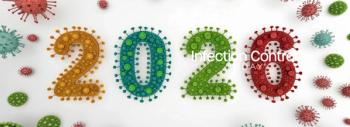
In Lab Tests, Triclosan Spurs Growth of Breast Cancer Cells
In a study published in the ACS journal Chemical Research in Toxicology, scientists have found that triclosan, as well as another commercial substance called octylphenol, promoted the growth of human breast cancer cells in lab dishes and breast cancer tumors in mice.
Kyung-Chul Choi and colleagues note that hormonal imbalances seem to play a role in the development of breast cancer. Given that link, researchers are investigating whether endocrine-disrupting chemicals (EDCs), which are compounds that act like hormones, might spur cancer cell growth. EDCs have become ubiquitous in products, in the environment and even in our bodies. Research has found that two EDCs - triclosan, an antimicrobial ingredient in many products, including soaps, cosmetics and cutting boards; and octylphenol, which is in some paints, pesticides and plastics - have accumulated in the environment. Additionally, triclosan is reportedly in the urine of an estimated 75 percent of Americans. Choi's team wanted to see what effect the two compounds have on breast cancer cells.
In tests on human breast cancer cells and in special immunodeficient mice with tissue grafts, the scientists found that both agents interfered with genes involved with breast cancer cell growth, resulting in more cancer cells. Mice that were exposed to the two compounds had larger and denser breast cancer tumors than the control group. "Although the doses of EDCs were somewhat high, we did this to simulate their effects of daily exposure, as well as body accumulation due to long-term exposure, simultaneously in animal experiments," says Choi. "Thus, exposure to EDCs may significantly increase the risk of breast cancer development and adversely affect human health," the researchers state in the paper.
The authors cite funding from the National Research Foundation of Korea and the Rural Development Administration of Korea.
Source: American Chemical Society
Newsletter
Stay prepared and protected with Infection Control Today's newsletter, delivering essential updates, best practices, and expert insights for infection preventionists.






